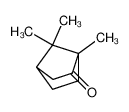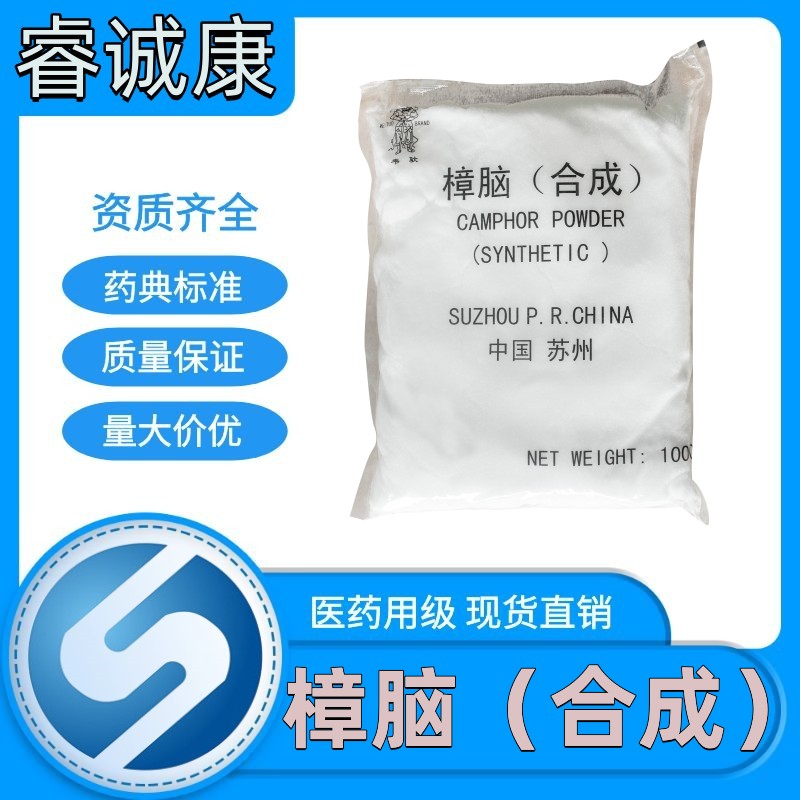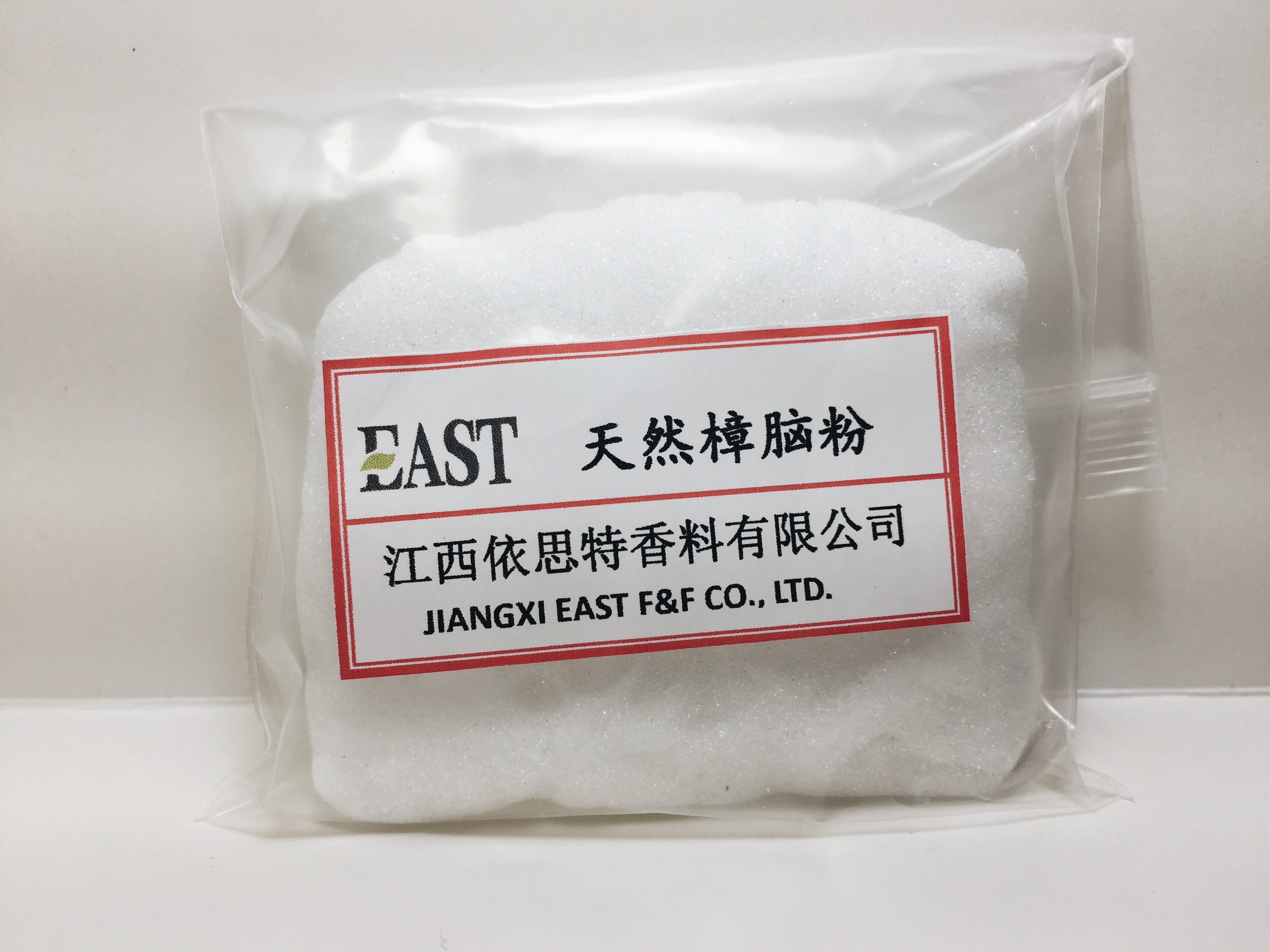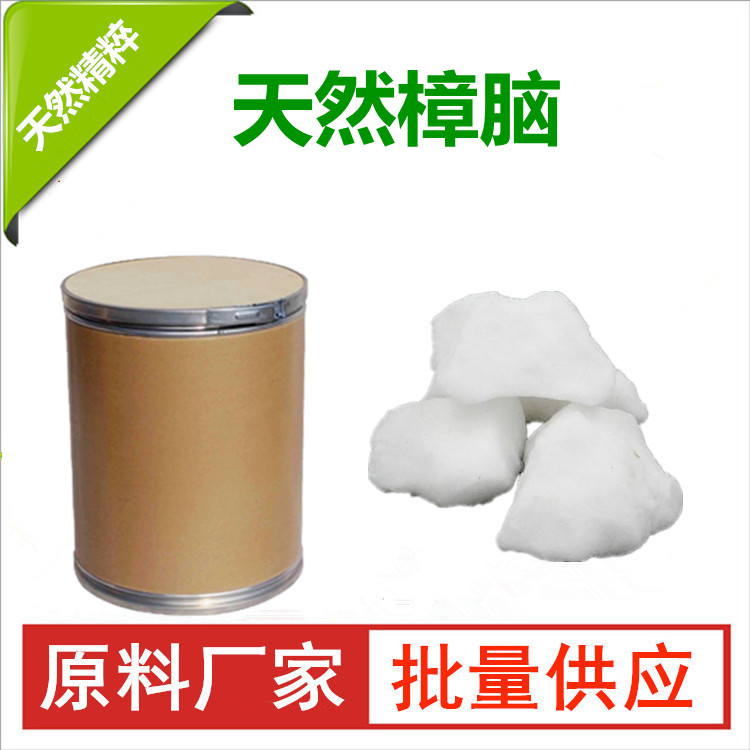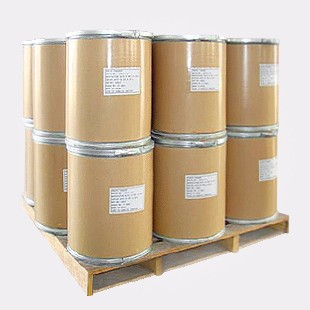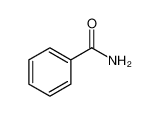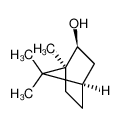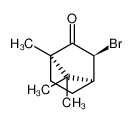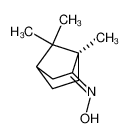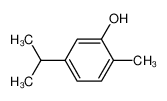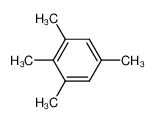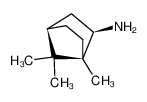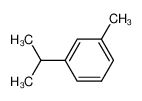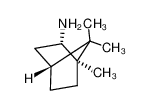| Product name | (R)-camphor |
|---|
| Product number | - |
|---|---|
| Other names | D-CAMPHOR |
| Identified uses | For industry use only. Food additives -> Flavoring Agents |
|---|---|
| Uses advised against | no data available |
| Company | MOLBASE (Shanghai) Biotechnology Co., Ltd. |
|---|---|
| Address | Floor 4 & 5, Building 12, No. 1001 North Qinzhou Road, Xuhui District, Shanghai, China |
| Telephone | +86(21)64956998 |
| Fax | +86(21)54365166 |
| Emergency phone number | +86-400-6021-666 |
|---|---|
| Service hours | Monday to Friday, 9am-5pm (Standard time zone: UTC/GMT +8 hours). |
Flammable solids, Category 2
Acute toxicity - Oral, Category 4
Acute toxicity - Inhalation, Category 4
Specific target organ toxicity – single exposure, Category 2
2.2 GHS label elements, including precautionary statements| Pictogram(s) |    |
|---|---|
| Signal word | Warning |
| Hazard statement(s) | H228 Flammable solid H302 Harmful if swallowed H332 Harmful if inhaled H371 May cause damage to organs |
| Precautionary statement(s) | |
| Prevention | P210 Keep away from heat, hot surfaces, sparks, open flames and other ignition sources. No smoking. P240 Ground and bond container and receiving equipment. P241 Use explosion-proof [electrical/ventilating/lighting/...] equipment. P280 Wear protective gloves/protective clothing/eye protection/face protection. P264 Wash ... thoroughly after handling. P270 Do not eat, drink or smoke when using this product. P261 Avoid breathing dust/fume/gas/mist/vapours/spray. P271 Use only outdoors or in a well-ventilated area. P260 Do not breathe dust/fume/gas/mist/vapours/spray. |
| Response | P370+P378 In case of fire: Use ... to extinguish. P301+P312 IF SWALLOWED: Call a POISON CENTER/doctor/…if you feel unwell. P330 Rinse mouth. P304+P340 IF INHALED: Remove person to fresh air and keep comfortable for breathing. P312 Call a POISON CENTER/doctor/…if you feel unwell. P308+P311 IF exposed or concerned: Call a POISON CENTER/doctor/... |
| Storage | P405 Store locked up. |
| Disposal | P501 Dispose of contents/container to ... |
none
3.Composition/information on ingredients 3.1 Substances| Chemical name | Common names and synonyms | CAS number | EC number | Concentration |
|---|---|---|---|---|
| (+)-bornan-2-one | (R)-camphor | 464-49-3 | none | 100% |
Consult a physician. Show this safety data sheet to the doctor in attendance.
If inhaledIf breathed in, move person into fresh air. If not breathing, give artificial respiration. Consult a physician.
In case of skin contactWash off with soap and plenty of water. Consult a physician.
In case of eye contactRinse thoroughly with plenty of water for at least 15 minutes and consult a physician.
If swallowedNever give anything by mouth to an unconscious person. Rinse mouth with water. Consult a physician.
4.2 Most important symptoms/effects, acute and delayedSYMPTOMS: Symptoms of exposure to this compound include irritation of the skin, eyes and mucous membranes. High concentrations may cause extreme destruction of tissue of the mucous membranes and upper respiratory tract, eyes and skin. Other symptoms of exposure include nausea, vomiting and epileptiform convulsions. It may cause colic, disturbed vision, delirium and death due to respiratory failure. It may also cause diarrhea, excitement and irrational behavior. Exposure may lead to headache, dizziness, feeling of warmth, muscle twitching, difficulty breathing, anuria, central nervous system depression and coma. Exposure may also lead to convulsions, burning sensation, coughing, wheezing, laryngitis, shortness of breath, vertigo and mental confusion. Ingestion of this compound may cause burning in the mouth and throat, epigastric pain, thirst, feeling of tension, rigidity, rapid pulse, slow respiration, twitching of the facial muscles, muscular spasms and unconsciousness. Flickering, darkening or veiling of the vision may occur, with noises in the ears and weakness. Several cases of superficial keratitis with temporary loss of corneal epithelium have been reported. ACUTE/CHRONIC HAZARDS: This compound is harmful by ingestion, inhalation and skin absorption. It is a severe irritant and high concentrations are extremely destructive to tissues of the mucous membranes and upper respiratory tract, eyes and skin. When heated to decomposition it emits acrid and irritating fumes.
4.3 Indication of immediate medical attention and special treatment needed, if necessaryTreatment of camphor intoxication is primarily supportive with a focus on airway management and seizure control. No antidotes are available. Activated charcoal should be administered for gastrointestinal decontamination, although its efficacy is doubtful. Due to prominent CNS effects, the induction of emesis is contraindicated. If liquid camphor is ingested, a nasogastric tube can be used to aspirate gastric contents before instillation of activated charcoal. Alcohols and oil solutions should be avoided because they have been reported to enhance absorption of camphor. Although not readily available, lipid hemodialysis and resin hemoperfusion have been reported to lower blood camphor concentrations in severely poisoned patients. Benzodiazepines such as lorazepam or diazepam are indicated for symptoms of CNS hyperactivity, such as agitation, tremors, and seizures. Phenobarbital can be used for recurrent or prolonged seizures.
5.Fire-fighting measures 5.1 Extinguishing media Suitable extinguishing mediaTo fight fire, use foam, carbon dioxide, dry chemical
5.2 Specific hazards arising from the chemicalThis chemical is combustible.
5.3 Special protective actions for fire-fightersWear self-contained breathing apparatus for firefighting if necessary.
6.Accidental release measures 6.1 Personal precautions, protective equipment and emergency proceduresUse personal protective equipment. Avoid dust formation. Avoid breathing vapours, mist or gas. Ensure adequate ventilation. Evacuate personnel to safe areas. Avoid breathing dust. For personal protection see section 8.
6.2 Environmental precautionsPrevent further leakage or spillage if safe to do so. Do not let product enter drains. Discharge into the environment must be avoided.
6.3 Methods and materials for containment and cleaning upMethods and materials for containment and cleaning up: sweep up and shovel. Contain spillage, and then collect with an electrically protected vacuum cleaner or by wet-brushing and place in container for disposal according to local regulation... Keep in suitable, closed containers for disposal...
7.Handling and storage 7.1 Precautions for safe handlingAvoid contact with skin and eyes. Avoid formation of dust and aerosols. Avoid exposure - obtain special instructions before use.Provide appropriate exhaust ventilation at places where dust is formed. For precautions see section 2.2.
7.2 Conditions for safe storage, including any incompatibilitiesConditions for safe storage, including any incompatibilities: keep container tightly closed in a dry and well-ventilated place.
8.Exposure controls/personal protection 8.1 Control parameters Occupational Exposure limit valuesRecommended Exposure Limit: 10 Hour Time-Weighted Average: 2 mg/cu m.
Biological limit valuesno data available
8.2 Appropriate engineering controlsHandle in accordance with good industrial hygiene and safety practice. Wash hands before breaks and at the end of workday.
8.3 Individual protection measures, such as personal protective equipment (PPE) Eye/face protectionSafety glasses with side-shields conforming to EN166. Use equipment for eye protection tested and approved under appropriate government standards such as NIOSH (US) or EN 166(EU).
Skin protectionWear impervious clothing. The type of protective equipment must be selected according to the concentration and amount of the dangerous substance at the specific workplace. Handle with gloves. Gloves must be inspected prior to use. Use proper glove removal technique(without touching glove's outer surface) to avoid skin contact with this product. Dispose of contaminated gloves after use in accordance with applicable laws and good laboratory practices. Wash and dry hands. The selected protective gloves have to satisfy the specifications of EU Directive 89/686/EEC and the standard EN 374 derived from it.
Respiratory protectionWear dust mask when handling large quantities.
Thermal hazardsno data available
9.Physical and chemical properties| Physical state | white crystals |
|---|---|
| Colour | Colorless or white crystals, granules, or crystalline masses; or as colorless to white, translucent, tough masses |
| Odour | Fragrant and penetrating odor |
| Melting point/ freezing point | 215°C(dec.)(lit.) |
| Boiling point or initial boiling point and boiling range | 204°C(lit.) |
| Flammability | no data available |
| Lower and upper explosion limit / flammability limit | Lower flammable limit: 0.6% by volume; Upper flammable limit: 3.5% by volume |
| Flash point | 107°C(lit.) |
| Auto-ignition temperature | 466.11°C |
| Decomposition temperature | no data available |
| pH | no data available |
| Kinematic viscosity | no data available |
| Solubility | less than 1 mg/mL at 15°C |
| Partition coefficient n-octanol/water (log value) | log Kow = 2.38 /measured/ |
| Vapour pressure | 0.225mmHg at 25°C |
| Density and/or relative density | 0.99 g/cm3 |
| Relative vapour density | 5.24 (Relative to Air) |
| Particle characteristics | no data available |
no data available
10.2 Chemical stabilityStable under recommended storage conditions.
10.3 Possibility of hazardous reactionsEvolves flammable and explosive vapors when heated.D-CAMPHOR is incompatible with strong oxidizing agents, strong reducing agents and chlorinated solvents.
10.4 Conditions to avoidno data available
10.5 Incompatible materialsReacts violently with ...strong reducing agents and chlorinated solvents, causing fire and explosion hazard.
10.6 Hazardous decomposition productsThe substance decomposes on burning producing toxic gases and irritating fumes.
11.Toxicological information Acute toxicity- Oral: LD50 Mouse oral 1310 mg/kg
- Inhalation: no data available
- Dermal: no data available
no data available
Serious eye damage/irritationno data available
Respiratory or skin sensitizationno data available
Germ cell mutagenicityno data available
CarcinogenicityA4; Not classifiable as a human carcinogen. /Camphor, synthetic/
Reproductive toxicityno data available
STOT-single exposureno data available
STOT-repeated exposureno data available
Aspiration hazardno data available
12.Ecological information 12.1 Toxicity- Toxicity to fish: LC50; Species: Pimephales promelas (Fathead minnow); Conditions: static bioassay; Concentration: 145 mg/L for 1 hr; 112 mg/L/24 hr; 111 mg/L/48 hr; 110 mg/L/72 hr; 110 mg/L/96 hr
- Toxicity to daphnia and other aquatic invertebrates: no data available
- Toxicity to algae: no data available
- Toxicity to microorganisms: no data available
AEROBIC: Camphor, at an influent concentration of 4.08 mg/L, was degraded to below detection limits (not specified) during a 20 hour aeration period in an aerobic activated sludge system(1). Camphor did not concentrate in the activated sludge solids. However, the loss of camphor in this process cannot be definitely attributed to biodegradation since there may have been loss due to volatilization(1). Monoterpine ketones were more resistant to biodegradation in aerated lagoon samples than monoterpine hydrocarbons or alcohols(2). The concentration of camphor actually increased in some of the samples which suggests that camphor was being produced in the lagoon. Camphor was on the list of very difficult to biodegrade compounds in a study of organic chemicals found in effluents(3). Camphor, present at 100 mg/L, reached 94% of its theoretical BOD in 4 weeks using an activated sludge inoculum at 30 mg/L in the Japanese MITI test which classified the compound as readily biodegradable(4).
12.3 Bioaccumulative potentialAn estimated BCF of 17 was calculated in fish for camphor(SRC), using a measured log Kow of 2.38(1) and a regression-derived equation(2). According to a classification scheme(2), this BCF suggests the potential for bioconcentration in aquatic organisms is low(SRC).
12.4 Mobility in soilUsing a structure estimation method based on molecular connectivity indices(1), the Koc of camphor can be estimated to be 117(SRC). According to a classification scheme(2), this estimated Koc value suggests that camphor is expected to have high mobility in soil.
12.5 Other adverse effectsno data available
13.Disposal considerations 13.1 Disposal methods ProductThe material can be disposed of by removal to a licensed chemical destruction plant or by controlled incineration with flue gas scrubbing. Do not contaminate water, foodstuffs, feed or seed by storage or disposal. Do not discharge to sewer systems.
Contaminated packagingContainers can be triply rinsed (or equivalent) and offered for recycling or reconditioning. Alternatively, the packaging can be punctured to make it unusable for other purposes and then be disposed of in a sanitary landfill. Controlled incineration with flue gas scrubbing is possible for combustible packaging materials.
14.Transport information 14.1 UN Number| ADR/RID: UN2717 | IMDG: UN2717 | IATA: UN2717 |
| ADR/RID: CAMPHOR, synthetic |
| IMDG: CAMPHOR, synthetic |
| IATA: CAMPHOR, synthetic |
| ADR/RID: 4.1 | IMDG: 4.1 | IATA: 4.1 |
| ADR/RID: III | IMDG: III | IATA: III |
| ADR/RID: no | IMDG: no | IATA: no |
no data available
14.7 Transport in bulk according to Annex II of MARPOL 73/78 and the IBC Codeno data available
15.Regulatory information 15.1 Safety, health and environmental regulations specific for the product in question| Chemical name | Common names and synonyms | CAS number | EC number |
|---|---|---|---|
| (+)-bornan-2-one | (R)-camphor | 464-49-3 | none |
| European Inventory of Existing Commercial Chemical Substances (EINECS) | Listed. | ||
| EC Inventory | Listed. | ||
| United States Toxic Substances Control Act (TSCA) Inventory | Listed. | ||
| China Catalog of Hazardous chemicals 2015 | Not Listed. | ||
| New Zealand Inventory of Chemicals (NZIoC) | Listed. | ||
| Philippines Inventory of Chemicals and Chemical Substances (PICCS) | Listed. | ||
| Vietnam National Chemical Inventory | Listed. | ||
| Chinese Chemical Inventory of Existing Chemical Substances (China IECSC) | Listed. | ||
| Creation Date | Aug 9, 2017 |
|---|---|
| Revision Date | Aug 9, 2017 |
- CAS: Chemical Abstracts Service
- ADR: European Agreement concerning the International Carriage of Dangerous Goods by Road
- RID: Regulation concerning the International Carriage of Dangerous Goods by Rail
- IMDG: International Maritime Dangerous Goods
- IATA: International Air Transportation Association
- TWA: Time Weighted Average
- STEL: Short term exposure limit
- LC50: Lethal Concentration 50%
- LD50: Lethal Dose 50%
- EC50: Effective Concentration 50%
- IPCS - The International Chemical Safety Cards (ICSC), website: http://www.ilo.org/dyn/icsc/showcard.home
- HSDB - Hazardous Substances Data Bank, website: https://toxnet.nlm.nih.gov/newtoxnet/hsdb.htm
- IARC - International Agency for Research on Cancer, website: http://www.iarc.fr/
- eChemPortal - The Global Portal to Information on Chemical Substances by OECD, website: http://www.echemportal.org/echemportal/index?pageID=0&request_locale=en
- CAMEO Chemicals, website: http://cameochemicals.noaa.gov/search/simple
- ChemIDplus, website: http://chem.sis.nlm.nih.gov/chemidplus/chemidlite.jsp
- ERG - Emergency Response Guidebook by U.S. Department of Transportation, website: http://www.phmsa.dot.gov/hazmat/library/erg
- Germany GESTIS-database on hazard substance, website: http://www.dguv.de/ifa/gestis/gestis-stoffdatenbank/index-2.jsp
- ECHA - European Chemicals Agency, website: https://echa.europa.eu/





